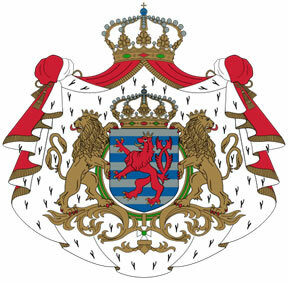THE OAS (Organization of American States) was founded in 1948 in Colombia and went into effect in 1951.
The entity is made up of 35 countries and aims to maintain democracy on the American continent.
OAS Objectives
One of the objectives of the OAS is to ensure the maintenance of democracy in the Americas. Thus, when a government experiences political turmoil, the OAS can be called upon to intervene.
Recently, Brazil and Venezuela experienced political problems that caught the attention of the OAS.
Brazil
During the process of Dilma Rousseff's impeachment, the OAS expressed its concern about the situation of the former president. The institution's secretary general, Luís Almagro, visited Brazil in May 2016 to assess whether the process was taking place within the legal framework.
Later, in August 2016, while the Senate vote was taking place, the Workers' Party filed an appeal with the OAS Inter-American Committee on Human Rights.
In June 2017, the Inter-American Court of Human Rights decided to shelve the request made by the Secretary General of the OAS, for him to comment on the situation of
Dilma Rousseff.Venezuela
If a country violates its constitution, the OAS can vote against sanctions and even expel the member state from the organization.
The OAS has been trying to condemn Venezuela since Nicolás Maduro arrested several political opponents in 2017. However, with the support of the Caribbean countries (which depend on Venezuelan oil), the country remains in the organization.
In 2018, despite Venezuela not having been invited to the Summit of the Americas, the Venezuelan president has already announced his presence at the meeting to be held in April, in Peru.
OAS countries
Currently, 35 countries in the Americas and about 62 observers are part of the OAS.
| Argentina | Antigua and Barbuda | Bahamas | Barbados | Belize |
| Bolivia | Brazil | Chile | Canada | Colombia |
| Costa Rica | Cuba | Dominica | Dominican Republic | Ecuador |
| El Salvador | Grenade | Guatemala | Guyana | Haiti |
| Honduras | Jamaica | Mexico | Nicaragua | Panama |
| Paraguay | Peru | Saint Kitts and Nevis | Saint Lucia | Saint Vincent and the Grenadines |
| Suriname | Trinidad and Tobago | Uruguay | Venezuela | U.S |
read more:
- Latin America
- Anglo-Saxon America
- Andean America
- UN
OAS Structure
The structure of the OAS is based on the holding of an annual general assembly, which is attended by the Ministers of Foreign Affairs of each country. For their part, the heads of state meet at the Summit of the Americas every three years.
Also, throughout the year, meetings of the councils, the legal commission and specialized conferences are held.
In addition to the annual meetings, the general assembly may call extraordinary sessions, as needed for discussion.
The permanent body of the OAS is the General Secretariat, located in Washington, United States.
OAS history
The origin of the OAS is found in the First International American Conference, which took place from 1889 to 1890, in Washington (USA).
At the time, most countries on the continent had achieved independence and from this meeting emerged the International Union of American Republics. It is the oldest regional body in the world.
After World War II there was a need to modernize the institution and reinforce its principles. Therefore, in 1948, in Bogotá, representatives of the American countries pledged to maintain democracy.
From this meeting was born the OAS Charter, which was amended by four protocols over the decades. On September 11, 2001, the Inter-American Democratic Charter was approved.

OAS Charter
In 1948, the member states drafted the OAS Charter, which is the governing document of the entity. Later, it would be revised by the following protocols: Buenos Aires, 1967; Cartagena de Indias, 1985; Managua, 1993; and Washington, 1992.
We highlight some of the resolutions that must be respected by everyone, such as:
- Defense of democracy in the countries of the continent;
- Respect for the personality, sovereignty and independence of States;
- Solidarity to guarantee the exercise of representative democracy;
- Elimination of poverty, consolidation of democracy;
- Guarantee of the fundamental rights of the human person;
- Education for justice, freedom and peace.
The OAS Charter can be downloaded in pdf on this link.



